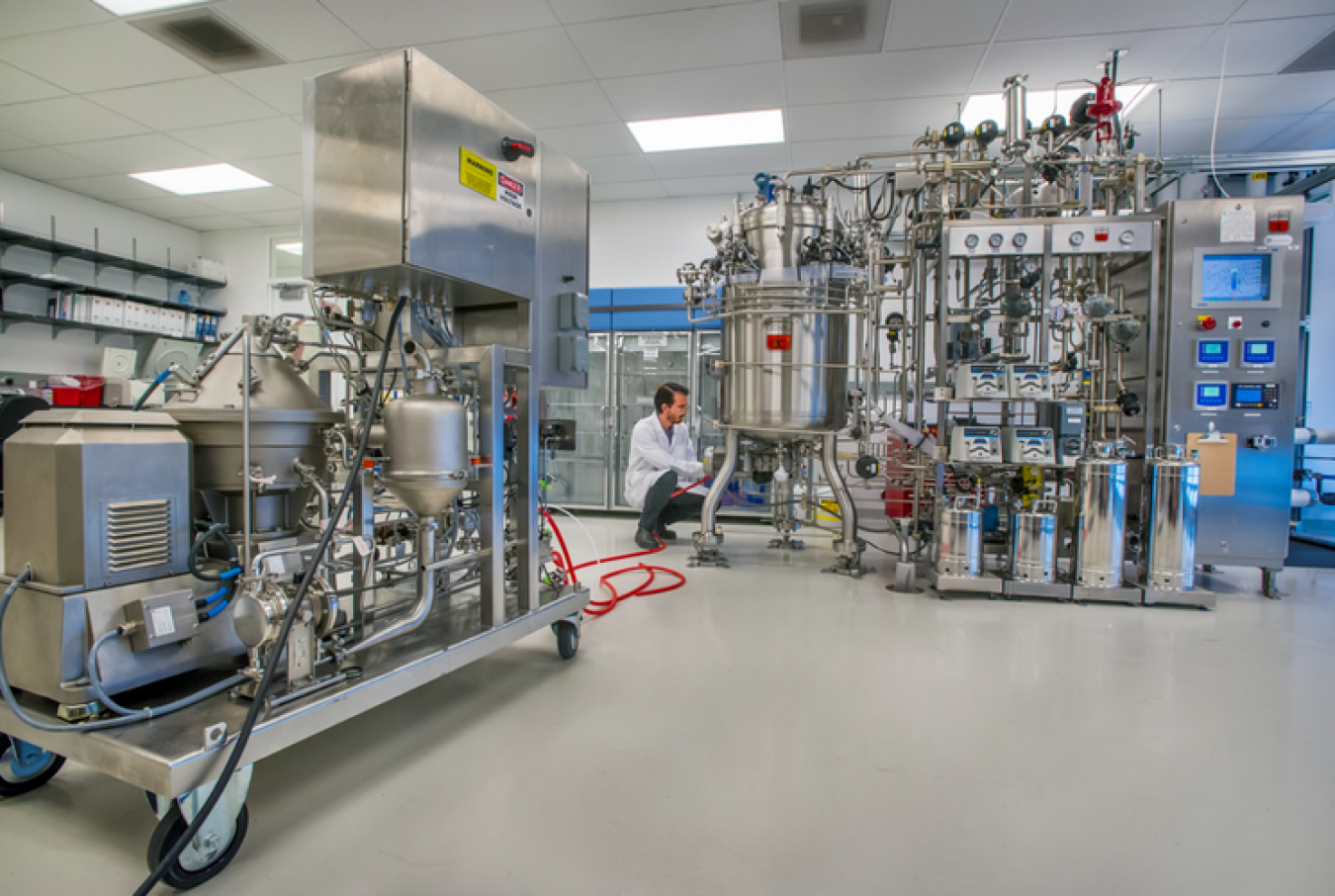What if plastic came from renewable resources? Mango Materials has developed a new way of producing plastics that make it biodegradable and petroleum-free. The project is being supported with help from the national laboratories through the Energy Depar...
Office of Energy Efficiency & Renewable Energy
March 7, 2017
Mango Materials' new process is being tested at Lawrence Berkeley National Laboratory's Advanced Biofuels Process Demonstration Unit. Photo|Berkeley Lab
Plastics are everywhere. They make up grocery bags, shampoo bottles, furniture, and even the microbeads in some toothpastes and facewashes. Unfortunately, when these products become trash, they persist in landfills, oceans, and other places where oil-based plastics can do more harm than good.
But what if there was a plastic that came from renewable resources? And what if once you were done using it, the plastic material was absorbed naturally by the environment?
Meet Mango Materials.
This bioenergy startup based in Berkeley, California has a new way of producing plastics—one that makes the common material biodegradable and petroleum-free.
How it works
Mango Materials focuses on creating an intracellular biopolymer, called polyhydroxyalkanoate, from methane using bacterial fermentation. Although the process is a bit technical, the end result is a polymer similar to polyethylene and polypropylene plastics used in everyday products.
One of the many advantages to biopolymers is that they’re biodegradable. For Mango Materials Chief Executive Officer Molly Morse, replacing persistent plastics with those that are fully biodegradable is what drives her to get this product to market.
“Plastics are used everywhere and many people do not think about what happens to them when they are no longer needed. Instead of accumulating in the environment, they will degrade in a short amount of time,” she said.
“Just imagine a polymer that can be digested by sea life…instead of tangled around their necks or stuck inside their stomachs.” - Molly Morse
Methane as a Feedstock
The key for Morse is using methane as a feedstock. By doing this, Mango Materials does not genetically modify its bacteria, but uses classic microbiology and environmental selection to cultivate the best polymer producers.
“With methane as our feedstock and our robust technology, we can ultimately drop the price of polymers at commercial scale to be competitive with traditional plastics,” said Morse.
The other side of the coin is that by capturing the methane and converting it into biopolymer, Mango Materials sequesters the carbon into a high-value material. Since its technology will be located at the site of methane production, it reduces methane emissions in both urban and rural locations.
“We have determined that by capturing the collected but unused (for electricity or vehicle fuels) methane from landfills in the U.S., it would produce well over three billion pounds of our biopolymer every year,” she said.
Scaling Up with the National Labs
Morse is the first to admit she’s taken a somewhat unconventional path in the scaling of this technology. Early on, she recognized that partnerships were key and sought out groups to work with to help the company develop and scale. Opportunities through grants and other competitions helped the company grow, make prototypes, and scale the technology. Now the company is tapping into the unique capabilities of two U.S. national labs thanks to the Energy Department’s Small Business Vouchers pilot (SBV), part of the Office of Energy Efficiency and Renewable Energy's Tech-to-Market program.
Last fall, Mango Materials received a $200,000 voucher to work with Lawrence Berkley National Laboratory. Through this partnership, the company gets access to Berkeley’s Advanced Biofuels Process Demonstration Unit, a 15,000 square-foot advanced technology facility, where scientists like Morse can try out different processes on their biofuel product. Specifically, Mango Materials will test new processes that remove water from their final biopolymer—a key part of turning waste gas into useable plastics.
For Morse, the voucher was exactly what her company needed.
“Many of the other grants we have been awarded will not fund the purchase of pricey capital expenditures such as dewatering and drying equipment,” said Morse. “Without the voucher, we would have had to find our resources elsewhere, which would have been costly. Being able to leverage the experience of the national labs has been tremendous as we extend our knowledge base for equipment and processing of materials.”

